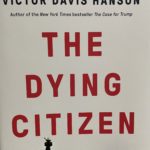College for dummies?
Except for the rather small number of selective colleges and universities, most schools face the problem of ill-prepared and poorly motivated students. At many lower-tier institutions, such students are the norm. The problem they create for the faculty and administration is difficult and serious: they want a college degree, but lack the skills to actually earn one.
What, if anything, can schools do to increase the likelihood that weak and disengaged students will find the path to academic success?
In a recent article in The Chronicle Review, Indiana University professor George D. Kuh (co-author of the recent book Piecing Together the Student Success Puzzle) offers some thoughts on that subject. They’re worth considering.
First, Kuh says that schools need to teach incoming students as early as possible how to use college resources effectively. Just doing a summer orientation and a bit of advising for new students when they arrive isn’t enough in most cases. The typical student won’t take the initiative to become really acquainted with the variety of support services that are available. “Institutions that are serious about helping more-vulnerable students succeed employ mechanisms like first-year seminars, supplemental instruction, and placement tests that ensure students are in courses for which they are prepared,” Kuh writes.
That’s undoubtedly good advice, but I wonder how many colleges and universities don’t already go to considerable lengths to make sure that students know about all the places on campus where they can go for help if they need it. Colleges pride themselves on being “warm and welcoming” – to the point that some students get tired of it. There are students who struggle in their first year and never take advantage of any of the support services available, but is that because they don’t know about them or because they aren’t really interested in the academic side of college?
Kuh recognizes that not all students can be motivated to succeed, saying “efforts will not in every case make up for students’ inadequate academic preparation in elementary and secondary school.” That’s right, but preparation is only half of the story. The other half is attitude, and large numbers of students today enter college with an attitude of entitlement. They think they’re entitled to high grades even though they put forth minimal effort.
Second, Kuh recommends making the classroom the locus of community. Since many students now commute and spend rather little time on campus, the classroom needs to become the central point for the absorption of campus culture and the distinctive ways of higher education.
Right again, and Kuh sees the implication: “That makes professors’ job in the classroom much more demanding and complicated. They must cultivate an atmosphere in which a group of strangers will listen attentively to others with respect, and challenge and support one another to previously unimagined levels of academic performance.” Professors don’t just need to teach their subjects, they also need to teach about institutional values and academic norms.
Kuh doesn’t mention it, but the subject that’s critical is plagiarism. Students must be informed that they are expected to do their own work; merely cutting and pasting paragraphs from material available on the internet won’t be acceptable. The trouble is that a tough no-plagiarism policy may cause a few students who can’t stand the thought of writing an original paper to leave. In the trade-off between academic integrity and maximizing the size of the student body, schools ought to come down on the former side.
Third, Kuh advocates networks and early-warning systems to support students who need help. Many weak students quickly find themselves struggling and Kuh suggests “tag teams” composed of professors, student mentors, advisers and staff members (including librarians) to keep an eye on students with obvious academic deficiencies. Those who are taking remedial courses would certainly be included.
Nothing wrong with that idea. I would guess that most schools with large populations of “at-risk” students already do something along these lines. Kuh mentions Fayetteville State’s Early Alert program as a good example. Unfortunately, he also mentions “service learning” programs as a means of helping struggling students. Service learning is a fad that combines community service work with a slim academic component that entails some “reflection” on the service work. It is possible to give students who need academic help the support they need without resorting to this sort of pabulum.
Fourth, Kuh suggests that every student should be connected “in a meaningful way” with some activity or positive role model. He writes, “Our survey shows that members of athletics teams, choirs and bands, and fraternities and sororities tend to graduate at higher rates, in part because the momentum of the group carries them forward, buoying them during difficult times.”
It’s probably true that students who feel “connected” are more likely to persevere. It’s probably also true that the weakest, most adrift students won’t care to sign on for extracurricular activities that will take time from other things. It’s also possible that these activities, especially frats and sororities, might prove to be terrible distractions. Trying to get people who aren’t by nature “joiners” to join something on campus isn’t likely to do much to improve graduation rates.
Fifth, Kuh says that if a program works, make it widely available.
That’s sufficiently obvious that I’ll move on to his final point.
Sixth, Kuh recommends that schools remove obstacles to student engagement and success. The main obstacle he discusses is “the runaround.” By that he means the frustration students experience when they can’t get information or help. It seems reasonable to conclude that if a weak, struggling student runs into obstacles, he’s more likely to quit in despair than is a strong student.
Another obstacle could be the assumption that things should always be done the way they’ve been done in the past. For example, a one-semester course in math, that’s too hard for many students might be broken into two, slower-paced courses.
Most of Kuh’s advice is good, but a college president who faces the problem of disengaged students might feel that there isn’t a lot of substance here – it’s like eating a package of puffed rice cakes.
I believe that Kuh has missed something important, namely the role of the professor.
Professors need to do more than just “make the classroom the locus of community.” They are the front line troops in the fight against the low student abilities and poor attitudes that lead to so much trouble. They need to find ways to ignite the spark of intellectual interest in the generally damp tinder of the student’s mind. A school can have all manner of support facilities for students, but unless the English professor manages to get them to want to learn English and the economics professor manages to get them to want to learn economics and so forth, it’s unlikely that the weak or disengaged student will achieve anything in college. (Yes, he might well accumulate enough credits to graduate, but that isn’t the same thing.)
As James Cote and Anton Allahar observe in their book Ivory Tower Blues, professors today have a different job than they did in the past. Those who teach at non-selective institutions “are now very much the ‘counter clerks’ of a big business that requires them not only to keep customers happy about a product that is suspect, but to make them feel good about themselves as ‘masters’ of this inferior product.” The traditional modus operandi of the college professor – assigning readings, lecturing, and expecting that the students will do the work, think about the material, and learn it largely on their own initiative – just won’t work with many of today’s students.
What is called for instead is more of the kind of spoon-feeding pedagogy that the students are used to. It also calls for more humor and other diversions to keep the short attention-span students from doodling, sending text messages to friends, or sleeping. In his book Generation X Goes to College, author Peter Sacks describes what he called his “sandbox experiment” to keep his journalism students interested (and also to prevent another semester of bad evaluations that would have cost him is job).
This approach requires teaching professionals with a new set of skills. It isn’t enough just to know one’s subject and how to present it to eager, intellectually capable learners. To succeed with the typical student of the 21st century, professors need to understand their psychology — shaped by many years of schooling that aimed at self-esteem building rather than the acquisition of skills and knowledge – and come prepared with a bag of “sandbox” tricks.
The main implication of that is that professors will need a lot more face time with students than most of them are used to — and perhaps can tolerate. To make that possible, administrators at all but the top research universities will need to require more teaching and less research. While in the past the key to academic promotion has been publication, for most schools in the future it will have to be demonstrated competence in teaching.
People respond to incentives. College administrators need to adjust the incentives for professors to take account of the reality that a large percentage of students are perilously low in ability and motivation
George Leef is vice president of research at the John William Pope Center for Higher Education Policy.



